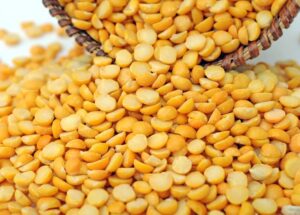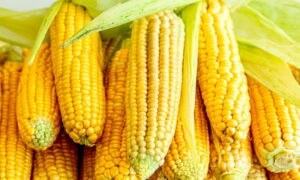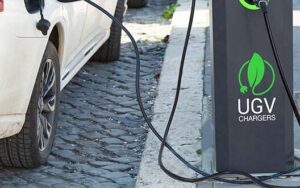
The domestic market for peas is seeing a decline in prices—before the start of the new season, quotations are falling by several percent, but more and more traders are showing interest in this crop for the first time, which could lead to an increase in demand and prices, according to the analytical cooperative Pusk, created within the framework of the All-Ukrainian Agrarian Council (VAR).
“We are currently seeing a slight decline in the price of peas before the start of the season. Theoretically, prices could fall further to 13,500–14,000 UAH/ton. But at the same time, many traders who previously did not work with peas at all are starting to actively engage in purchases. Niche crops usually offer good margins, especially for export. This motivates the market,” analysts say.
They emphasize that in 2025, the area under peas increased: last year, farmers sowed 212,000 hectares, while this year — over 250,000 hectares. However, even these volumes remain relatively small compared to other crops.
At the same time, the opening of the Chinese market is an important factor: demand from China could quickly absorb all the additional production.
“We have seen some growth in acreage, but not millions of hectares. China has opened its market, and a significant portion of the peas will likely go there. That means that an additional 40,000 hectares of pea acreage is not such a large resource. In this situation, a deficit is quite possible — demand will exceed supply,” analysts predict.
After a short-term decline, pea prices may stabilize and rise in mid-July-August. A similar situation already occurred last year, when prices began to rise instead of falling as expected.
“The pea market may again see levels of 15,000–16,000 UAH/ton. Everything will depend on logistics, weather conditions, and the pace of Chinese imports,” concluded Pusk.

Cow prices in February 2025 increased by 20-46% depending on fatness, according to the Association of Milk Producers (AMP).
According to the report, the average price for cows below average fatness in the first half of February 2025 increased to 73 UAH/kg excluding VAT, which is 23 UAH or 46% more than a month earlier, for cows of average fatness – up to 72 UAH/kg excluding VAT (18.25 UAH or 34% more), for higher fatness – up to 70 UAH/kg excluding VAT (12 UAH or 20% more).
“Over the past few weeks, prices for cattle have been rising in Ukraine, driven by an increase in live exports in December-January. The outbreak of foot-and-mouth disease in the German state of Brandenburg led to a reduction in the export of live animals from the EU. However, the demand for cattle in foreign markets is quite active during the period of preparation for Ramadan in Muslim countries,” the industry association explained.

In August, registrations of electric vehicles (new and used) in Ukraine amounted to 6,445 thousand, which is 68% more than in August last year and 36.6% more than in July this year, Ukravtoprom reported on its telegram channel.
As reported, in July 2024, the demand for electric vehicles increased by 38% compared to July 2023 and by 14% compared to June 2024.
As reported, market experts attribute this jump in demand for electric vehicles over the past 1.5 months to the government’s initiative to introduce a 15 percent military tax on car buyers during the first registration, including electric vehicles, which are currently not taxed in Ukraine (except for a small excise tax).
In late August, it was reported that the government had abandoned this initiative.
According to Ukravtoprom, the share of new cars in electric car registrations in August was 18%, the same as a year earlier (21% in July).
The bulk of electric vehicles registered during the month were passenger cars – 6,302 thousand units (new – 1,159 thousand, used – 5,143 thousand), and only five of 143 commercial vehicles were new.
The top five new electric cars in July were BYD Song Plus – 174 units; Honda M-NV – 169 units; Volkswagen ID.4 – 147 units; ZEEKR 001 – 107 units; Nissan Ariya – 83 units.
The top five used cars were Nissan Leaf – 658 units; Tesla Model Y – 588 units; Tesla Model 3 – 561 units; Hyundai Kona – 308 units; Volkswagen e-Golf – 289 units.
In total, in January-August, more than 35.6 thousand battery-powered vehicles were registered for the first time in Ukraine (79% more than in the same period in 2023), with new vehicles accounting for 20%.
For its part, the AUTO-Consulting information and analytical group also notes a jump in demand for electric cars based on information about military training – according to its data, 1.3 thousand new electric vehicles were sold in August, which was a monthly sales record for the entire period of observation.
“Although the market share of electric cars slightly decreased compared to previous months and amounted to 16%, the absolute number of sales was a record, despite the massive power outages,” the group’s website states.
According to experts, 8.2 thousand new electric vehicles (16.9% of the total car market) were sold in Ukraine in 8 months of 2024, which is 30% more than in the same period in 2023.
As reported, in 2023, according to Ukravtoprom, registrations of new and used electric cars in Ukraine increased 2.8 times to 37.6 thousand, with new cars accounting for 20% compared to 17% a year earlier.

Contrary to forecasts, Ukrainian corn has started to rise in price on world markets due to increased demand from China, Turkey, Egypt and the European Union, according to the analytical cooperative “Pusk”, created within the framework of the All-Ukrainian Agrarian Council (AAC).
“The expectations of the trade that with the arrival of a new corn crop from Argentina on the world market, demand and prices for Ukrainian grain would fall, did not materialize. Argentine new crop is sold at higher prices than Ukrainian corn. We can predict a rise in prices for corn from Ukraine in the coming weeks,” the analysts said.
According to them, China is actively contracting Ukrainian corn. Other importers, such as Turkey, Egypt, Italy, and Spain, have also started buying a lot of Ukrainian corn. In seaports, the conditional prices for it have risen to $142-145/ton and have been increasing for a week and a half. The supply is sinking, while demand is stable.
“It can be predicted that amid demand, prices will add $2-3 per tonne per week and reach at least $150/tonne on a CPT basis by the end of March,” the experts emphasized.
They said that in April, the main factor of corn price changes will be the information on the grain harvest in Brazil. In April, there will be more reliable information about the harvest in Brazil: the planted areas, soil moisture, and crop condition. This will affect the global market. If the drought continues in Brazil and the harvest is reduced, the price will rise. But for now, this is one of the scenarios. In case of rainfall in Brazil, the situation on the global corn market will be different.
On a DAP basis, Ukrainian corn is traded for delivery in March-April to Italy, Austria and Germany in the range of $192-197/ton, Pusk summarized.

Initial registrations of new buses (including minibuses) in Ukraine in February 2014 increased by 22.7% compared to February last year, to 108 units, according to statistics released by Ukravtoprom.
At the same time, the demand for buses decreased by 9.2%, or 11 vehicles, compared to January 2014.
According to the report, the Ukrainian Ataman was the market leader with 40 buses registered: in February last year, it was second with 22 vehicles. The second place went to Etalon, the leader of last February, whose registrations decreased by 14 units to 30 buses.
Citroen took the third place, just like a year earlier, with 10 buses (one more), and Volkswagen was fourth again with 9 vehicles (5 units more).
Ford rounds out the top five with eight buses registered, compared to three a year earlier. In February last year, the top five was closed by Ukrainian ZAZ, but in February of this year, these buses were not registered.
At the same time, registrations of Turkish buses in February by Temsa amounted to only 1 unit against 13 in January this year. This brand reportedly plans to significantly strengthen its position in Ukraine, particularly in the school bus segment.
Thus, in January-February 2024, the first registrations of buses in Ukraine decreased by 30.6% compared to the same period in 2023 – to 227 units.
In 2023, the total number of new bus registrations of all classes in Ukraine amounted to 1,701 units, which is 86% more than in 2022.

In February, registrations of electric vehicles (new and used) in Ukraine increased 2.3 times compared to the same month in 2023 – up to 3.924 thousand units, including the share of new ones at 24%, Ukravtoprom reported on its Telegram channel.
The bulk of the electric vehicles registered during the month were passenger cars – 3,881 thousand units (new – 926 units, used – 2,955 units), and only two of the 43 commercial vehicles were new.
The top five new electric cars on the market in February were formed by: Volkswagen iD.4 – 257 units; BYD Song Plus – 104 units; Honda eNS1 – 96 units; Nissan Ariya – 71 units and Honda M-NV -49 units.
The TOP-5 of the first-time registered used cars in January included Nissan Leaf – 416 units; Tesla Model 3 – 380 units; Tesla Model Y – 279 units; Volkswagen e-Golf – 210 units and Hyundai Kona Electric -161 units.
As reported, in January of this year, Ukrainians purchased more than 3.5 thousand electric vehicles, which is 2.8 times more than in January 2023, with the share of new cars amounting to 24%.
In total, 7.5 thousand electric vehicles were registered for the first time in Ukraine in two months, 2.5 times more than a year earlier.
In 2022, according to Ukravtoprom, registrations of electric cars in Ukraine increased 2.8 times to 37.6 thousand, with new cars accounting for 20% compared to 17% a year earlier.